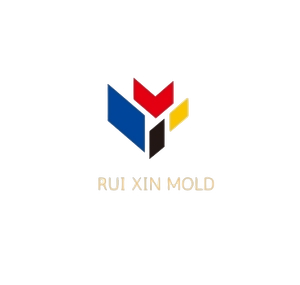What are Mold Inserts?

In the world of plastic injection mold design, certain areas often require the incorporation of inserts – specialized mold fittings inlaid into the mold cavity itself. These inserts can take on various shapes and forms, including square, round, or sheet-like structures, each custom-crafted to meet the stringent precision requirements of the specific mold.
Common types of inserts found in mold design include:
– Core pins
– Insert blocks
– Rods
– Rings
Why Use Mold Inserts?
The utilization of inserts in plastic mold design offers several compelling advantages that can significantly enhance the overall molding process:
1. Material Conservation
Inserts enable designers to reduce the height or size of the mold core in specific areas, thereby conserving the overall mold material required and optimizing material usage.
2. Modification Facilitation
For areas that may necessitate frequent alterations or changes, inserts provide a convenient solution. Instead of modifying the entire mold, these replaceable inserts can be easily swapped out, facilitating a more streamlined modification process.
3. Improved Venting
In deep cavities prone to air traps during the injection molding process, inserts offer crucial venting paths, ensuring proper air evacuation and preventing defects.
4. Machining Simplification
Complex geometries that pose challenges for traditional machining can be addressed through the use of inserts, simplifying the overall machining process for the mold cavity.
5. Extended Mold Life
When inserts become worn due to extended use, they can be easily replaced, effectively prolonging the overall lifespan of the mold and reducing the need for frequent mold replacements.
6. Thermal Management
Inserts crafted from thermally conductive materials like beryllium copper can effectively dissipate heat in areas lacking cooling channels, improving thermal management within the mold.
mold insert part
The Mold Insert Manufacturing Process
To ensure optimal performance and durability, mold inserts undergo a meticulous manufacturing process involving:

1. Material Selection: Choosing the appropriate material based on factors such as hardness, wear resistance, and thermal conductivity requirements. Common materials used include hardened tool steels like D2, A2, H13, and tungsten carbide.
2. Machining: The insert blank undergoes CNC milling, turning, or EDM processes to achieve a near-net shape, with tight tolerances of ±0.005mm or better maintained throughout.
3. Heat Treatment: If non-hardened steel is used, the machined insert is subjected to a heat treatment process like vacuum hardening to achieve the desired hardness levels, typically ranging from 50 to 62 HRC.
4. Finish Grinding: Precision grinding processes, including OD, ID, and surface grinding, are employed to achieve extremely tight tolerances of ±0.005mm or better, as well as mirror-like surface finishes.
5. Coating (Optional): For improved wear resistance, the finished inserts can be coated with thin, hard layers of materials like titanium nitride (TiN) or chromium nitride (CrN) using PVD or CVD coating processes.
6. Quality Checks: Rigorous dimensional and surface finish inspections are conducted to ensure the final inserts meet all specified requirements before being approved for use.
Specialized equipment, including CNC machines, grinding equipment, coating systems, and CMM inspection tools, are utilized to manufacture these high-precision mold inserts economically and at scale while maintaining tight quality controls.
Balancing Benefits and Tradeoffs
While mold inserts offer significant advantages in plastic injection mold design and manufacturing, it’s essential to acknowledge their potential drawbacks, such as increased mold assembly complexity, the risk of flash formation around the inserts, higher overall costs, and potential interference with cooling channels.
To optimize the use of mold inserts, a thorough evaluation of the product design is recommended. This evaluation should aim to determine where inserts are genuinely needed while avoiding excessive use that could negate their inherent benefits.
By judiciously incorporating mold inserts and leveraging their advantages, manufacturers can streamline the plastic injection molding process, improve efficiency, and enhance the overall quality and longevity of their molds.
For more information pls visit our website:www.dgruixinmold.com
related tags:#precisionmanufacturing #injectionmolding #moldmaking #cncmachining #rapidprototyping #sheetmetalfabrication #automotivemanufacturing #aerospacemanufacturing #electronicsmolding #custommanufacturing #qualityassurance #innovativesolutions #customerservice #dongguan #china #manufacturingexcellence #engineeringexpertise #industrypartner #productdevelopment #manufacturingservices
